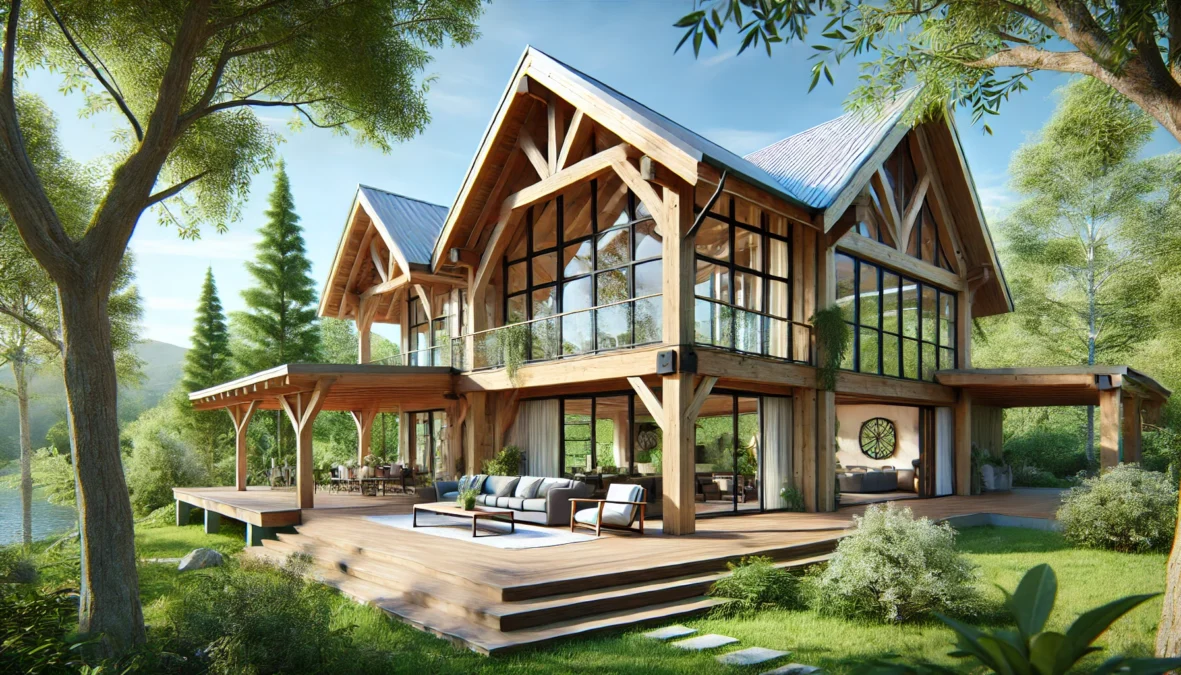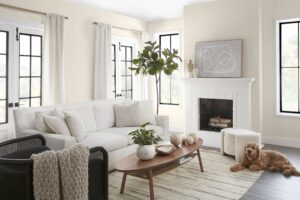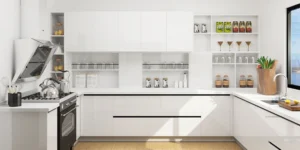Post and Beam Homes: Timeless Design and Modern Comfort?

Post and beam homes have captivated homeowners and architects for centuries with their unique blend of rustic charm and structural integrity. Rooted in traditional timber framing methods, these homes have evolved to suit contemporary lifestyles while preserving their timeless appeal. This article delves into the features, benefits, and considerations of post and beam homes, offering a comprehensive guide for anyone interested in this architectural style.
What Are Post and Beam Homes?
Post and beam homes are constructed using a framework of vertical posts and horizontal beams, which form the structural skeleton of the building. This method of construction dates back thousands of years and has been used in various cultures worldwide, including medieval Europe and Asia. The key elements of post and beam construction include:
- Exposed Timber Framework: The wooden posts and beams are often left exposed, showcasing the natural beauty of the wood.
- Joinery Techniques: Traditional post and beam homes use mortise-and-tenon joints secured with wooden pegs, though modern methods may incorporate steel connectors.
- Open Floor Plans: The robust framework eliminates the need for load-bearing interior walls, creating spacious and versatile layouts.
Advantages of Post and Beam Homes
- Aesthetic Appeal
The exposed timber elements lend a warm, natural aesthetic to post and beam homes. The architectural style seamlessly integrates with rustic, contemporary, and modern design themes, making it adaptable.
- Structural Durability
Timber-framed structures are renowned for their strength and longevity. Properly maintained, post and beam homes can withstand harsh weather conditions and last for generations.
- Design Flexibility
The open floor plans allow homeowners to customize layouts to their preferences, making the design process more creative and personalized.
- Sustainability
When sourced responsibly, the wood used in post and beam construction is an environmentally friendly building material. Timber framing also requires fewer materials compared to conventional construction methods.
- Energy Efficiency
Post and beam homes can be highly energy-efficient with proper insulation and energy-efficient windows. The thermal mass of timber helps regulate indoor temperatures, reducing heating and cooling costs.
Materials Used in Post and Beam Homes
Wood Selection
Choosing the right type of wood is crucial for the structural and aesthetic success of post and beam homes. Commonly used woods include:
- Douglas Fir: Known for its strength and beautiful grain patterns.
- Oak: Valued for its durability and rich color.
- Cedar: Prized for its resistance to rot and insects.
- Pine: A cost-effective option with a lighter appearance.
Complementary Materials
Post and beam homes often incorporate other materials to enhance their design and functionality:
- Stone: Used for fireplaces, foundations, or accent walls to add texture and contrast.
- Glass: Large windows and skylights maximize natural light and connect the interior with the surrounding environment.
- Metal: Steel brackets and hardware can provide additional structural support and a modern touch.
Designing a Post and Beam Home
Floor Plans
One of the most appealing aspects of post and beam homes is the freedom to create custom layouts. Popular design features include:
- Vaulted Ceilings: Highlighting the grandeur of the timber framework.
- Open Kitchens and Living Areas: Ideal for family gatherings and entertaining.
- Lofts and Mezzanines: Utilizing vertical space effectively.
Exterior Design
The exterior of post and beam homes often reflects their naturalistic ethos. Key elements include:
- Timber Cladding: Wood siding enhances the rustic charm.
- Overhanging Roofs: Protect from the elements and emphasize the structural framework.
- Outdoor Living Spaces: Decks and patios extend the living area and connect the home to its environment.
Construction Process
- Planning and Design
The process begins with detailed planning and collaboration between architects, engineers, and homeowners. Factors such as site location, climate, and budget are carefully considered.
- Sourcing Materials
High-quality timber is selected, and additional materials like glass, stone, and metal are procured.
- Fabrication and Assembly
Depending on the project’s scope, the timber frame is prefabricated off-site or constructed on-site. Precision in joinery is crucial for structural integrity.
- Erection of the Frame
The framework is assembled, and walls, roofs, and other components are installed.
- Finishing Touches
Interior and exterior finishes, including insulation, flooring, and fixtures, are completed to bring the home to life.
Considerations When Building a Post and Beam Home
Cost
Post and beam homes are typically more expensive than conventional homes due to the high-quality materials and skilled labor required. However, their durability and timeless appeal make them a worthwhile investment.
Maintenance
Timber requires regular maintenance to prevent rot, insects, and weathering. Protective finishes and treatments can prolong the lifespan of the wood.
Climate Suitability
The design and materials should be adapted to the local climate. For instance, extra precautions may be needed in humid regions to prevent moisture-related problems.
Why Choose Post and Beam Homes?
Post and beam homes stand out for their unique combination of traditional craftsmanship and modern adaptability. They appeal to homeowners seeking:
- A connection to nature through sustainable materials and open designs.
- Architectural beauty and a sense of history.
- A highly customizable living space that can evolve with their needs.
Conclusion
Post and beam homes perfectly combine timeless craftsmanship and contemporary living. These homes offer unmatched aesthetic and functional benefits, from their stunning exposed timber frameworks to their versatile floor plans. While the initial investment and maintenance requirements may be higher than conventional homes, the long-term beauty, durability, and sustainability rewards make them an exceptional choice. Whether you’re drawn to their rustic charm or modern adaptability, post and beam homes are a testament to the enduring appeal of quality and craftsmanship.



